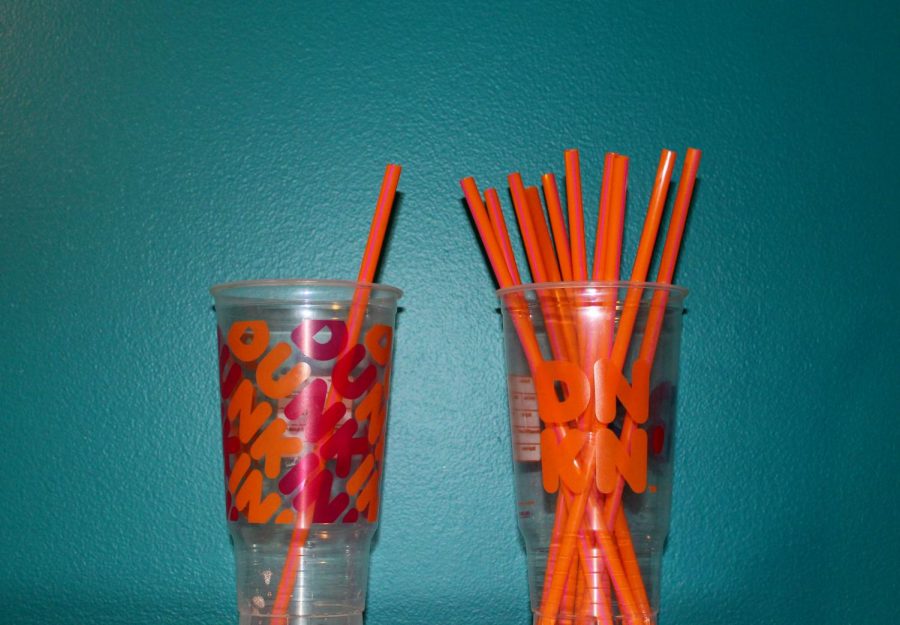This is the last straw
June 12, 2019
For almost 100 years, plastic straws have been produced and used without hesitation. At most restaurants, coffee shops and ice cream parlors, Diet Cokes, venti mocha iced coffees and vanilla milkshakes always came with straws. Unfortunately for plastic-straw-lovers, they will be in for a surprise the next time their signature drink is served strawless.
Cities and states throughout the country have placed bans on plastic straws that recently gained popularity on a global scale. California was the first state in the U.S. to place regulations on plastic straws. By July 2018, Seattle was the largest city in the country to place a ban on them. With the kick start of the new year, Washington D.C. made the ban in restaurants and in other services their 2019 resolution.
AP U.S. History teacher, Caroline Blanchard, has participated in the plastic straw ban. She has tried plastic lids on her drinks and incorporated the use of paper straws in her daughter’s lifestyle. She said that her part in eliminating plastic straw use is minuscule compared to the overarching environmental issues that exist today.
“I think no matter if it is the straw itself, a lid or paper, you still have to think about your product consumption,” Blanchard said. “So it’s not so much about shifting from, let’s say, plastic to paper, I think people have to cut down on their overall consumption.”
Large companies and food chains recognized this significant problem and began to participate in the movement. Starbucks wants to completely ban plastic straws by 2020 and McDonalds will start to incorporate other alternatives in locations across the globe. Both girl and boy scouts have campaigned against plastic straw use and successfully persuaded certain airlines and companies to eliminate or replace them with sustainable materials.
As the issue gained popularity, the question raised over whether plastic straws are actually a serious threat to the environment. An estimated 500 million are used daily in America alone and tremendous amounts end up in our oceans and pollute them. They are often left on beaches, littered and blown out of trash cans, boats and vehicles as a result of their small size. These straws then break down into smaller pieces known as microplastics that do not biodegrade or dissolve, resulting in plastic being found in sea salt, U.S. tap water, birds, shellfish and other aquatic animals.
Recycling may seem as if it is a simple solution to put an end to this plastic epidemic, but it is actually a part of the problem. Plastic straws are too lightweight to recycle, which leads to the improper disposal of them and an increasing amount of plastic in oceans and other places where it does not belong.
“Recycling just isn’t enough to stop this growing problem,” AP Environmental Science student Natalie Caine said. “So many people think they are making a difference by simply putting plastic in separate bins but there is so much more that needs to be done.”
Despite the negative impact plastic straws have on the environment, out of the eight million tons of plastic that flow into the ocean every year, less than three percent of it comes from straws. Those who support the plastic straw ban do recognize this potential setback, but still encourage limiting the use because straws are something they believe people can easily do without.
Plastic straws themselves do not compare to, but contribute to, the constantly growing popularity of consumerism. The “throw away culture” is a global issue that increases overconsumption and excessive production of disposable items that can only be used once. The plastic straw ban is one step forward to ultimately end consumerism and to eliminate the single use of plastic.


